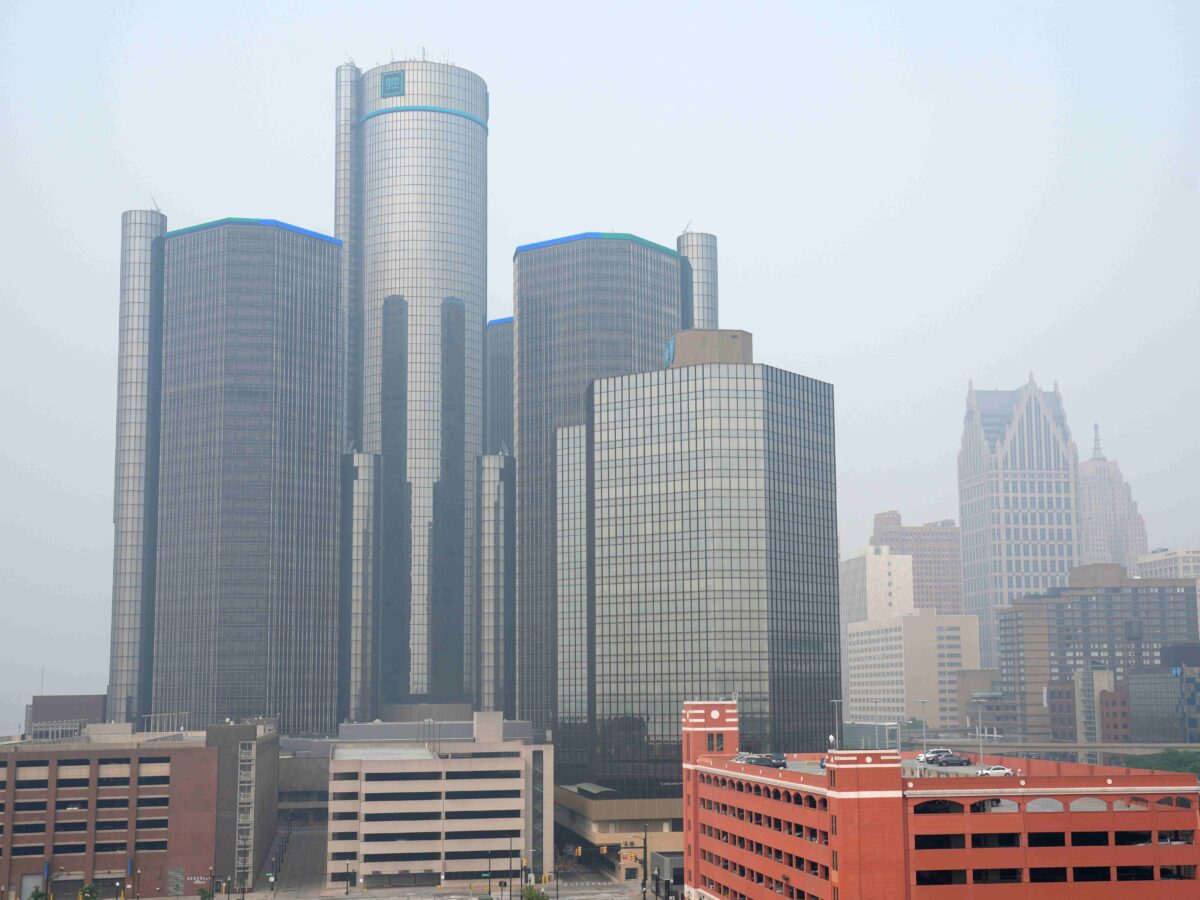Overview:
-The Michigan Department of Environment, Great Lakes, and Energy extends statewide air quality advisory through Tuesday.
-Tuesday will mark Wayne County's 16th day of the year with an air quality alert or advisory.
-In 2024, the state issued six air quality advisory days for Wayne County due to ozone, and none for PM2.5, an EGLE meteorologist tells Planet Detroit.
Michigan is under a statewide air quality advisory Monday for elevated levels of fine particulate matter, or PM2.5.
The advisory, driven by Canadian wildfire smoke, is being extended through Tuesday, Stephanie Hengesbach, air quality meteorologist at Michigan’s Department of Environment, Great Lakes, and Energy EGLE, told Planet Detroit.
Pollutants are in the Unhealthy for Sensitive Groups range, and some locations are reaching the Unhealthy range, according to the state.
Tuesday will mark Wayne County’s 16th day with an air quality alert or advisory in 2025, Hengesbach said. One of the alerts was for ozone; 14 were for PM2.5;, and one air quality alert was for both ozone and PM2.5.
In 2024, the state issued six air quality advisory days for Wayne County due to ozone, and none for PM2.5, Hengesbach said.
In 2023, Wayne County saw 22 air quality alert days: 11 days for ozone, 11 days for PM2.5, and two days for both.
The air quality index score Monday afternoon in the Detroit’s 48201 zip code is 158, according to the EPA’s AirNow website. That places the city’s air quality in the red “Unhealthy” zone.
Detroit’s air ranks fourth worst in the world Monday, according to the index published by the website IQAir — between Baku, Azerbaijan and Jakarta, Indonesia.
MORE PLANET DETROIT REPORTING
Canadian wildfire smoke triggers Michigan air quality alert: What you need to know
As Canadian wildfire smoke blankets Michigan, EGLE’s air quality alert urges residents to limit outdoor activities, avoid burning, and keep windows closed, highlighting the health risks for sensitive groups statewide.
What to do when Detroit air is polluted with wildfire smoke
As wildfire smoke drifts across borders, its health impacts are felt unevenly. Vulnerable groups like those with chronic conditions, pregnant women, children, and first responders face heightened risks.
Wildfire smoke from Canadian blazes threatens Detroit air quality
Michigan issues air quality advisory due to smoke from wildfires in Canada’s Manitoba province, where 17,000 people are under evacuation orders.
Some Michiganders more vulnerable to wildfire smoke
Certain groups are more sensitive to the health effects of wildfire smoke and face higher risks of more severe symptoms and complications, according to the Michigan Department of Health and Human Services.
Those considered especially vulnerable include:
- People with heart disease
- People with lung conditions such as asthma or chronic obstructive pulmonary disease (COPD)
- Older adults (ages 60 and up)
- Children and teenagers
- Pregnant individuals
- Outdoor workers
Social and economic factors can increase risk, according to MDHHS. This includes individuals without stable housing, those with limited mobility, and people with low incomes who may not have access to protective or air-filtering equipment. Residents in areas with consistently poor air quality heightened exposure.
Healthy individuals can be affected, especially when exercising or working outdoors. Increased physical activity leads to faster and deeper breathing, which allows more smoke to enter the lungs. The longer a person is exposed to smoky conditions, the greater the potential for harm, states MDHHS.
The health effects from breathing wildfire smoke can include stinging eyes, wheezing, coughing, and shortness of breath. For people with existing heart or lung disease, breathing unhealthy levels of fine particulate over a short period of time, even one to two hours, can increase the risk of breathing problems, heart attacks, and sudden death.
The Air Now site suggests protecting oneself on days when the air quality is unhealthy by shortening outdoor activities and exercising away from busy roads.
When particle levels are high outdoors, they can be high indoors too. Air Now advises reducing indoor smoke exposure by refraining from using fireplaces, wood stoves, candles, or smoking indoors.




